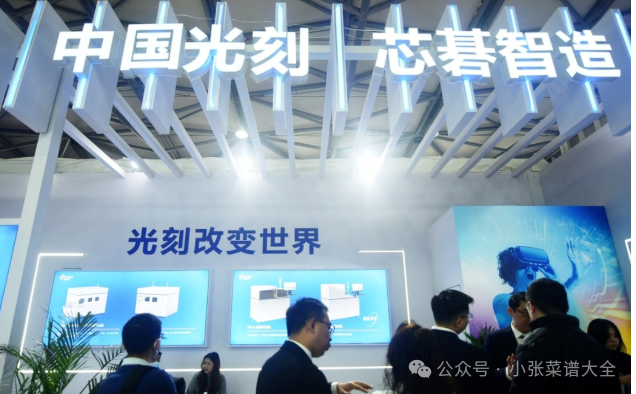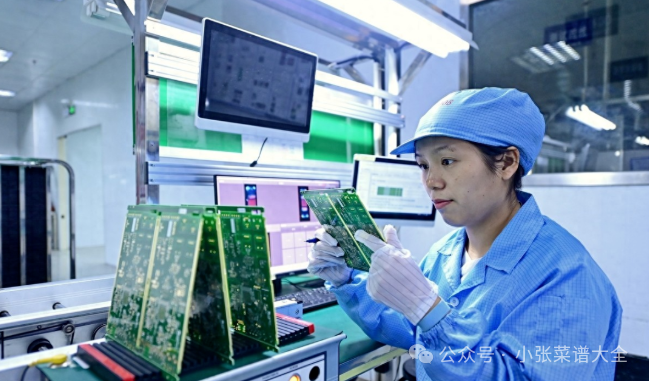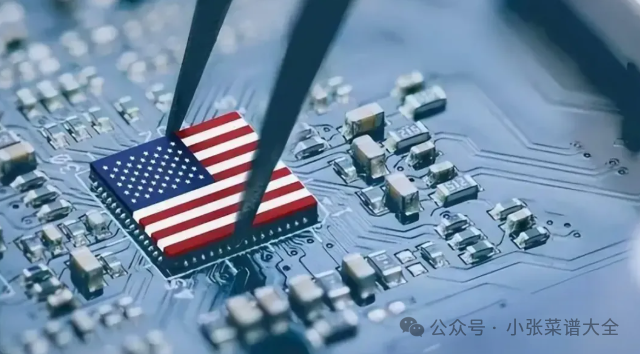Interesting Phenomena Observed Since the Discontinuation of American Chips: Since the discontinuation of American chips, smartphone manufacturers have been busy seeking new suppliers.
With the gradual tightening of the American chip ban, the once-dominant American chip manufacturers seem to be disappearing from the stage of the Chinese smartphone industry. In the past, when picking up a phone, people were most concerned about whether “this chip is the latest model and whether it is American?” However, the situation has subtly changed. The days of switching chips have become lively, as smartphone manufacturers are actively seeking new chip suppliers, with domestic chip suppliers becoming their new favorites.
Supply Chain Changes: Shifting from American Chips to Domestic Chips

First and foremost, the dramatic changes in the supply chain must be mentioned. Previously, it was well-known that in the smartphones of major manufacturers like Apple, Huawei, and Samsung, almost every chip was linked to American semiconductor giants. However, now, smartphone manufacturers seem to be escaping from the “embrace of American chips” in search of new hope. Domestic companies like SMIC and UNISOC have received more substantial orders than ever before, and even previously obscure small chip manufacturers are starting to emerge. It can be said that domestic chip manufacturers have become the “new favorites” of smartphone manufacturers. What has this “chip revolution” brought? Oh, it has brought more choices and vitality! After all, in a world dominated by “American chips,” the sudden emergence of several local suppliers is reminiscent of the story of “big fish eating small fish,” but now, this “fish pond” has a greater variety of “fish.”
Alternative Materials: From Chips to Materials, the Story of Shifting Resources

However, switching chips is not just about changing names; it also involves another significant issue: the replacement of materials. You see, smartphone manufacturers are not only looking for alternative chips; they are also trying to “shift resources” in the chip production process. To reduce dependence on the American supply chain, many smartphone manufacturers are exploring domestic materials to replace those once considered “high-end imports.” For example, the manufacturing processes of certain domestic chips are gradually starting to use advanced local materials instead of relying solely on imports. Although the strategy of “shifting resources” may not be perfect, it undoubtedly accelerates the research and development of domestic materials. Interestingly, this “remedial” approach has inadvertently promoted the rapid development of the domestic materials industry.
Competitive Landscape Adjustment: Performance Differences Begin to Emerge

After this “chip overhaul,” the competitive landscape of smartphones has undergone subtle changes. Different manufacturers using chips from different sources have begun to show performance differences, especially in areas such as power consumption, 5G connectivity, and image optimization. Some domestic chips, while not yet fully catching up to the high-end performance of American chips, have unexpected advantages in certain details. For instance, the power consumption control of domestic chips has gradually improved; although there is still a gap compared to top American chips in some aspects, their performance in the mid-to-low-end market has become increasingly impressive.
Even the competition in the budget smartphone market has become more intense. It is well-known that the user base for budget smartphones is the largest, prompting more manufacturers to invest efforts in this area. The rise of domestic chips has given these manufacturers more confidence to create products with differentiated advantages while keeping costs down. Take a look at some recent budget smartphones; although the chips are not American, their battery life and camera performance are completely on par with those high-end models featuring “American chips.”
Innovation and Development: Technology Does Not Stop Without American Chips
An even more interesting phenomenon is that, in the face of the absence of American chips, many manufacturers have demonstrated stronger technological innovation capabilities. It may come as a surprise that, without the support of American chips, some manufacturers have made significant breakthroughs in fast charging, image algorithms, and operating system optimizations. For example, certain domestic smartphone manufacturers have developed their own fast charging technology that is not only incredibly fast but also safer, even surpassing some high-end brands that rely on American technology. This makes me wonder, is it really impossible to replace American chips? The facts prove that the spirit of innovation and technological research and development has never stopped due to the absence of a particular chip.
Changing Consumer Attitudes: The “Chip Complex” Fades Away
Consumer attitudes have also changed. In the past, we might have confidently asked, “What chip does this phone use? Is it American or domestic?” But now, consumers seem less concerned about the origin of the chip. More importantly, it is the actual user experience of the phone that matters. How is the camera performance? Is the battery life reliable? Can fast charging fill the battery quickly so we can continue playing games? These are the key issues that consumers focus on. People are gradually realizing that the quality of a smartphone does not solely depend on the brand of the chip, but rather on whether the chip can deliver optimal performance in real-world usage.
Future Outlook: More Manufacturers Join the Fray, Driving Change
Looking ahead, as domestic chip technology continues to advance, competition in the smartphone market will become even more intense. Moreover, it is not just traditional smartphone manufacturers; even some internet companies and automotive manufacturers may join the battle for smartphone chips. It is foreseeable that the future of the smartphone industry will no longer be a solo performance by a few major players, but rather a market tide filled with diversity and innovation. In such an environment, those who can continue to innovate and provide products that meet consumer needs will secure a place in this industry transformation.
In summary, since the discontinuation of American chips, smartphone manufacturers have become more active, and the changing landscape of the market has brought new opportunities and challenges. This profound transformation, while facing various difficulties, has also provided domestic manufacturers with unprecedented motivation and space. The future smartphone market may thus become more vibrant.